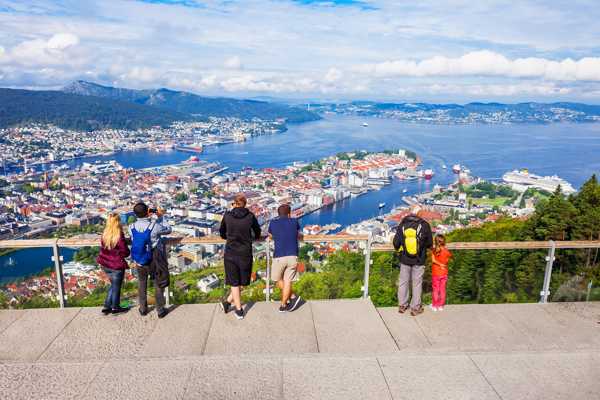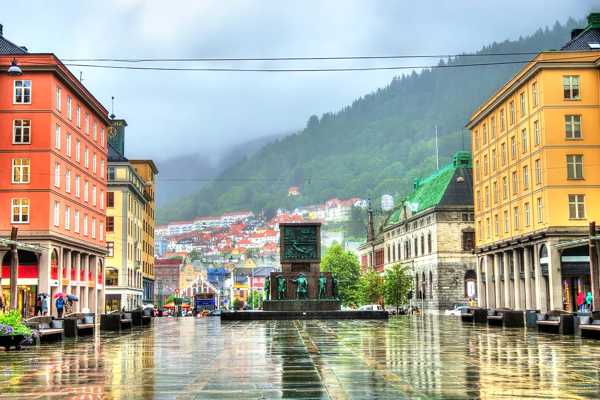Strandgaten is the traditional shopping street in the centre of Bergen and home to some of the city's most famous and attractive retail premises.
A succession of fires throughout history have led to the buildings being regularly refurbished, but the street is very old and has been flanked by buildings since the Middle Ages. In the 19th century, the street was described as Norway's busiest shopping street, a status that still persists, although shopping habbits and patterns have changed dramatically since then. Strandgaten has three main parts to it: The southeastern part, which is the stretch from Torgallmenningen to Murallmenningen, is a busy shopping street with car traffic. Then comes the stretch from Murallmenningen to Holbergallmenningen, which is a pedestrian street. The last part out on Nordnes is just a residential area. It is the first two parts that are of most interest.
Strandgaten in Bergen - one of the highlights of 10 Best Things to Do in Bergen (Read all about Bergen here)
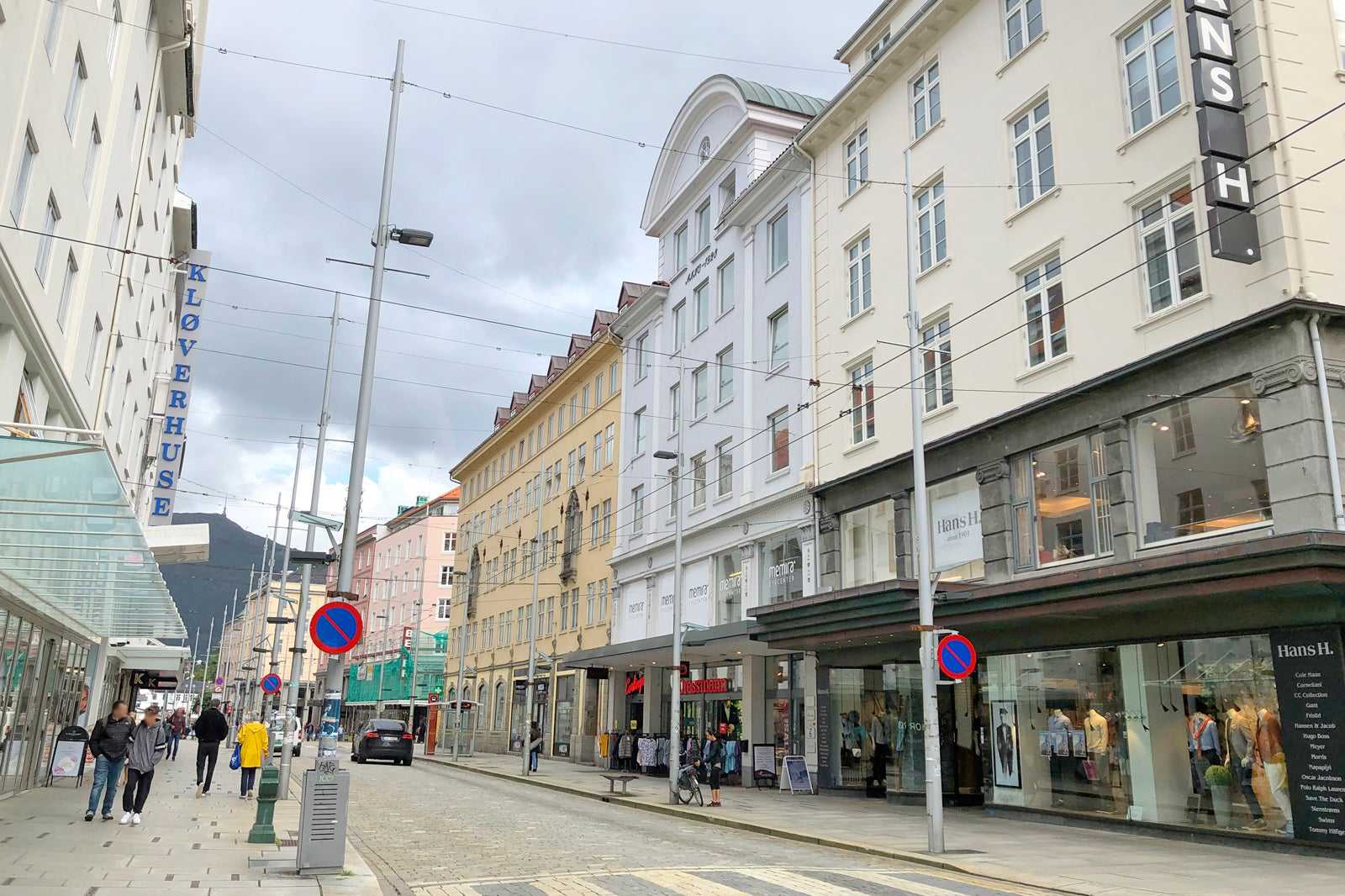
照片由 Ssu 拍攝 (CC BY-SA 4.0) 經過修圖
Highlights of Strandgaten
Along the southern part of the street, which burned down in 1916 and was rebuilt in the period 1919 to 1936, you will find some of the most famous names in Bergen's retail trade. You'll experience a fairly uniform, holistic environment here, which is pleasant to walk around, especially after the recent reduction of car traffic and upgrade to the street environment. The area now benefits from beautiful paving stones, wide pavements and a consistent style. The small roof extensions over the shop windows are also useful in this rainy city.
The corner of number 4 bears a large sign that says BEYER. This is Norway's oldest book store, established in 1771 and with an address at this part of Strandgaten for over a hundred years. On the corner opposite Beyer is Svaneapoteket, Norway's first pharmacy and perhaps the country's oldest company, with history dating back to the 16th century. The current building was completed in 1920 and was purpose built for the pharmacy. The main door is a replica of the one that disappeared in the fire in 1916, while the swan that flutters its wings over the front door on the corner, is said to have been cast from metal remains that were found on the fire site. You can also see the swan motif in the decor above the windows and on all the lift doors inside the building.
A little further out on the same side of the street, at number 18, is Kroepeliengården. Note the elegant entrance on the corner, which is retracted from the street so that it creates a small space. On the other side of the street, in numbers 13-15 and number 17 respectively, you'll find the two traditional department stores Kløverhuset and Wallendahl. The former was a leader in textiles and fashion for many years, and the place is still worth a visit if you're into exclusive clothing. Wallendahl claims to be the city's first trading house and has been selling hardware and household goods since the 19th century.
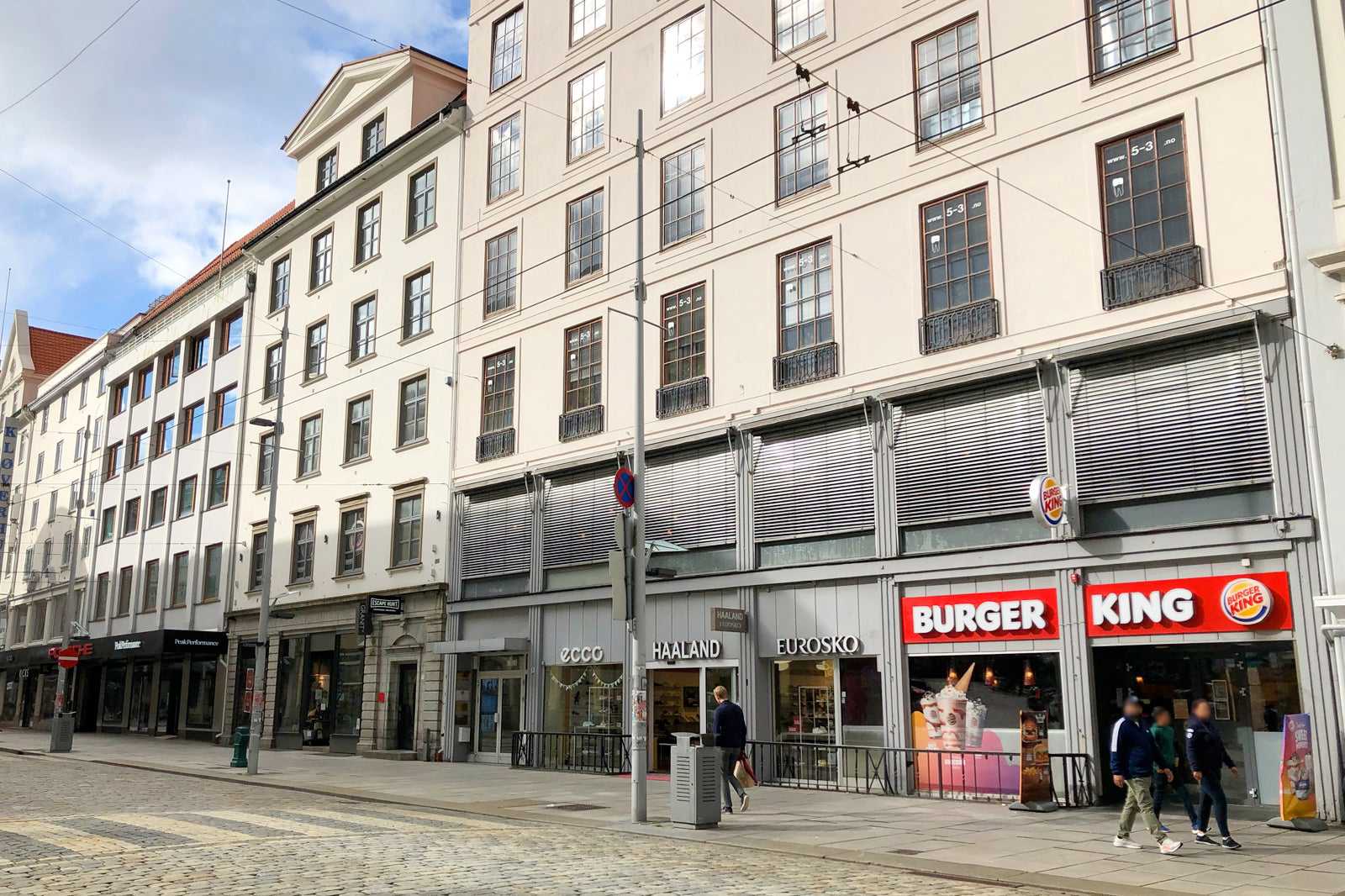
照片由 Ssu 拍攝 (CC BY-SA 4.0) 經過修圖
The city's first pedestrian street
The stretch from Murallmenningen to Holbergallmenningen became Bergen's first pedestrian street in 1971, which made it an attractive shopping area in a city increasingly characterised by vehicle traffic. The area was spared by the city fire in 1916, and has therefore changed relatively little since the 19th century. The street has a completely different feel compared to other parts of the street, with low wooden houses and ancient building remains. Take a detour up the "alleyways" at the top of the street if you want to see some of the old buildings, such as Cort Piilsmuget, where the author Amalie Skram once lived. In an old cellar in the same area is the atmospheric Altona bar, known as the city's best place for a "date" and a mecca for wine lovers.
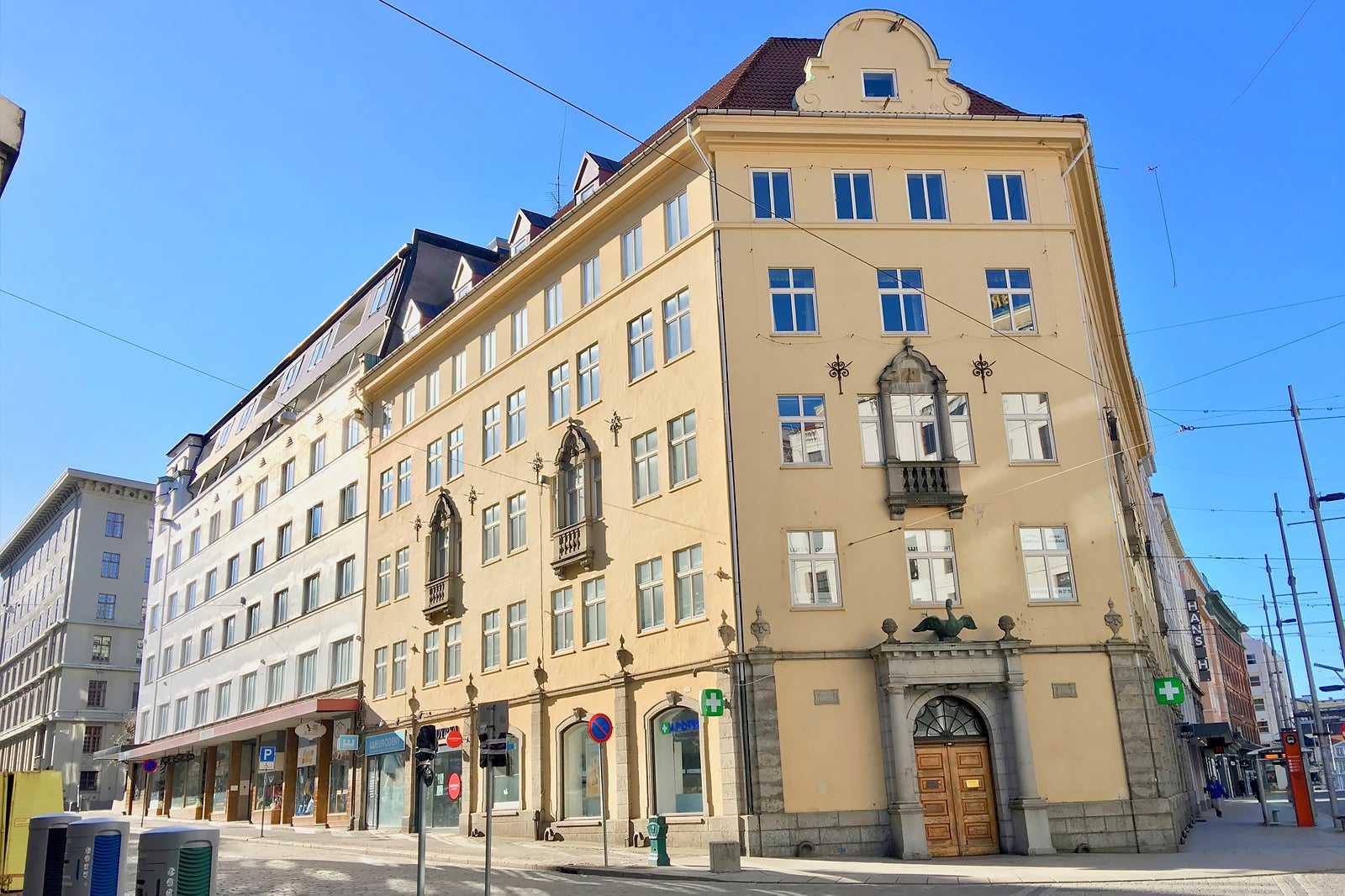
照片由 Wolfmann 拍攝 (CC BY-SA 3.0) 經過修圖
Worth knowing about Strandgaten
With a length of 1.2 kilometres, Strandgaten is quite a walk, so it may be worth stopping halfway at the end of Gågaten. Further out is the area that was completely destroyed during World War II, which means that the houses where greats like Edvard Grieg and Ludvig Holberg grew up, no longer exist. If you still walk all the way to the end, you'll come to the Aquarium in Bergen and the pleasant little Nordnesparken, which juts out into the city fjord. Public transport is limited, but there are bus stops on Tollbodsallmenningen down the street and at Sjøfarende's retirement home on the back of the Nordnes Peninsula.
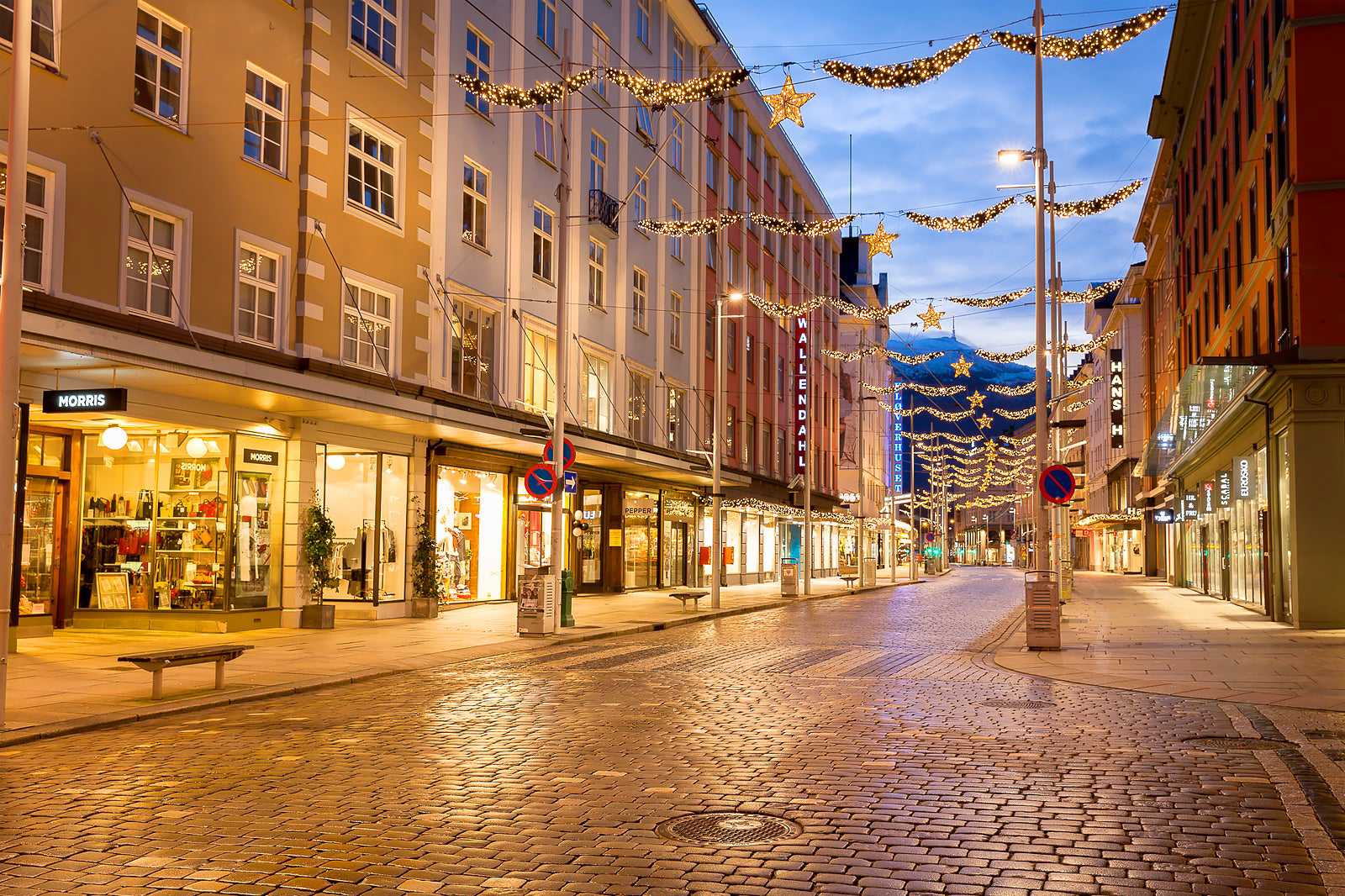
照片由 Svein-Magne Tunli 拍攝 (CC BY-SA 4.0) 經過修圖
Strandgaten in Bergen
位置資訊: Strandgaten, 5004 Bergen, Norway













